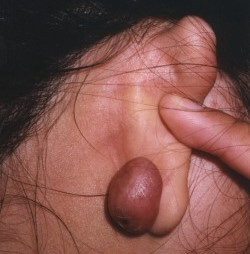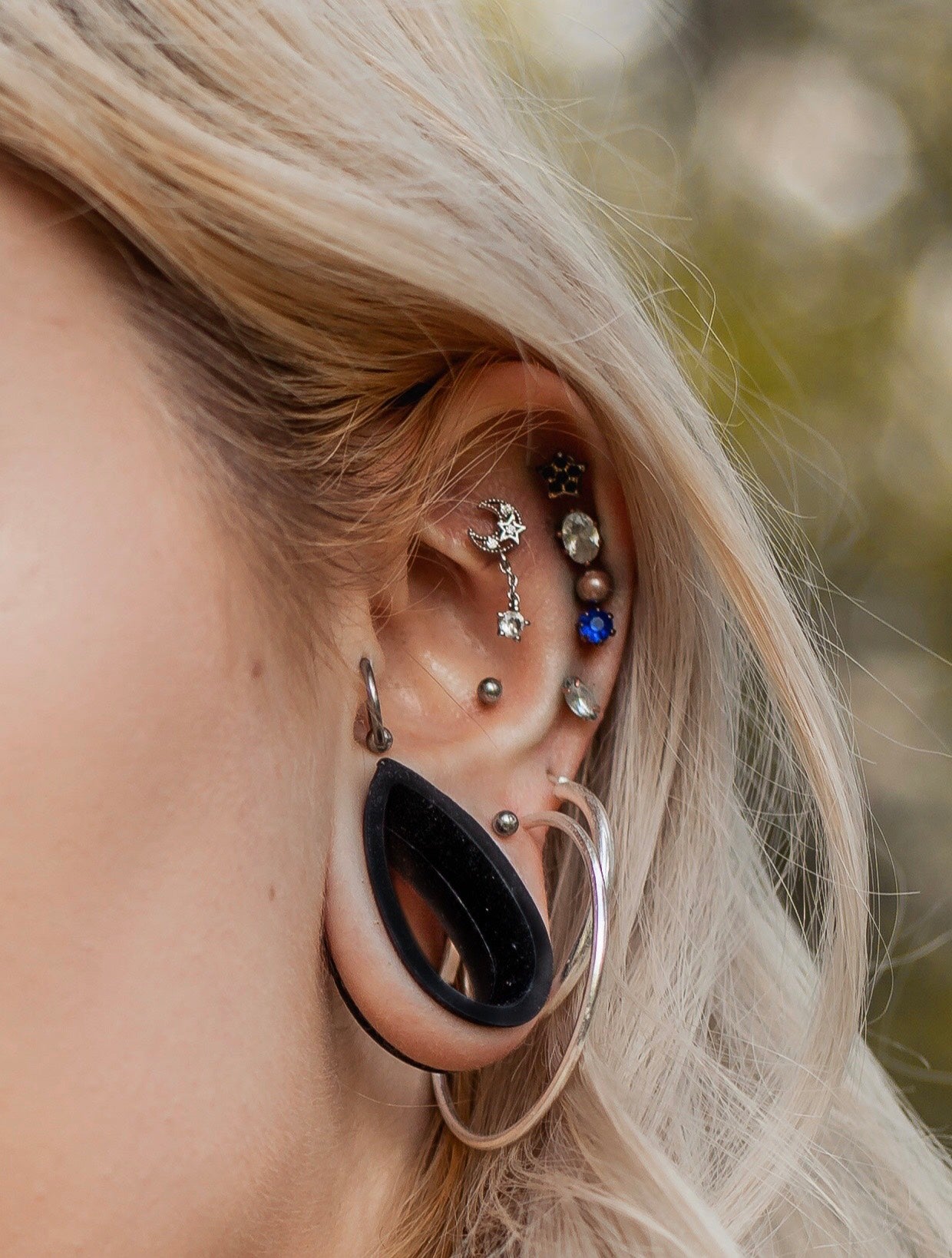
How to Safely Stretch a Piercing
If you’re interested in stretching a piercing, there are safe ways to do it and then there are unsafe ways. Knowing what your options are and what the differences are between them will help you figure out which way is the best for your piercing.

What Is Stretching?
Stretching, also known as gauging, is the process of increasing the size of a piercing hole (fistula). It is typically a gradual process that can take many months or even years to reach the desired gauge size.
Why Do People Do It?
The people who choose to stretch their piercings do so for different reasons. Many tribal members stretch piercings as symbols of cultural and social status. In western civilizations, it is done primarily for adornment, although there is a part of stretching that seems to appeal to a primal urge hidden deep within all of us. It is possible that seeking such ancient body alterations is the result of a person tapping into some dormant primitive gene, but that is merely speculation.
Stretching Options
There are several different methods that can be utilized to stretch a piercing. The following are the most common:
Tapering
Weights
Scalpelling
Taping
Dermal Punch
Preparing for the Stretch
One thing that has been suggested to help make soft tissue more pliable and easy to stretch is applying heat and massaging the area with olive oil to stimulate blood circulation and soften the skin prior to stretching. Less trauma to the tissue during the stretch will result in a shorter healing time.
Gauge Up Gradually
In most cases, the safest way to stretch a piercing is slowly and gradually. It’s extremely important that the fistula is completely healed before attempting any stretch. If you’re gauging up anywhere between 18 and 12, it’s usually safe to stretch two gauges at a time. (i.e. 16 to 14). However, once you reach a 12 gauge, the stretches become much larger with each gauge. To see the difference in size between different gauges, refer to a gauge chart. At that point, you’ll want to stretch one gauge at a time. Any more than that could result in tearing and scarring.
It’s also very important that you make sure to wait for one stretching to heal completely before stretching again. Depending on the size of the stretch and your body’s ability to heal, it could take weeks or months to be ready to undergo the procedure again.
Although it is not recommended, you can speed up the process of increasing gauge size with scalpelling or with a dermal punch. Be sure that you research these options fully before deciding on either of them.
Will it Shrink Back?
In the event that you stretch your piercing and then decide that you don’t like it anymore, the odds are not in your favor that it will shrink back to normal size. When you stretch a piercing, you need to be sure that you are prepared for it to be permanent. However, there is always a chance that it could go back to normal size, but it depends on a few different factors:
Size of Stretch – The larger you go, the less likely it will go back to its original size. Generally, 2 gauge has been coined “the point of no return,” meaning that once you have stretched that far, it’s not going to go back.
Length of Stretch Time – If your piercing has been stretched for a couple of years or more, it’s pretty well set and probably isn’t going to shrink back.
How it Was Stretched – If the piercing was stretched too quickly, especially if there was an resulting scar tissue, it probably won’t revert very easily. If it was done with a scalpel or dermal punch, it definitely will not shrink.
Possible Complications
If safety precautions are not observed, there are some problems that can occur.
Blow-outs can occur if you stretch too early before the fistula is completely healed. Bleeding and soreness are common but can continue longer than necessary if you stretch too far or too fast. Infections can develop if the piercing is not cleaned regularly or properly, or if improper jewelry is being used. It’s important that you be very careful before proceeding with any stretching, and it’s always best to leave it to the professionals – don’t attempt to do it yourself.
Care and Healing
Healing a newly stretched piercing is very similar to healing a brand new piercing, but it requires some additional TLC. It’s very important to keep it clean and allow it the opportunity to “breathe.” Sea salt soaks are also important to keep an infection from developing and to sooth the soreness.
Proper Jewelry
No matter how attractive plugs are and how much you may want to wear plugs, they are not advisable during the healing process. They tend to suffocate the piercing, especially the side that holds the o-ring. If you must wear a plug, be sure to remove that o-ring every time you clean the piercing. Otherwise, it’s best that you stick to a CBR, circular barbell or flesh tunnel that requires no o-ring. Once your piercing is completely healed, you can switch to a plug if you so desire.
During the healing stages, it is not advisable or safe to wear silver, gold, organic, plastic, glass or bone jewelry. These materials are conducive to causing irritation and infection in unhealed piercings. Only surgical grade stainless steel, niobium or titanium should be used during the healing of any new or newly stretched piercing.
Worth the Wait
If you stretch carefully and slowly, it will all be worth it in the end. It’s difficult being patient through this process and if you’re the kind of person that needs instant gratification, then this may not be a good option for you.
Before deciding to stretch any of your piercings, make sure that you are 100% positive that this is what you want. In most cases, stretching is permanent, so it’s not a decision that should be made lightly. And due to the fact that there are several things that can go wrong if it isn’t done properly, please see a professional and let them help you stretch safely.
https://www.liveabout.com/how-to-safely-stretch-a-piercing



Leave a comment
This site is protected by hCaptcha and the hCaptcha Privacy Policy and Terms of Service apply.